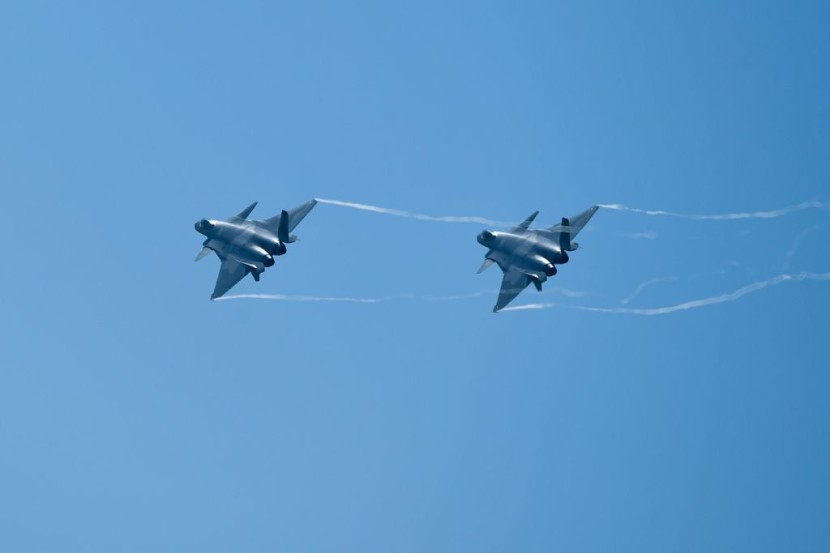
The J-20 Mighty Dragon demonstrated its agility at low speed in a public demonstration on August 27. It doesn't have a new engine yet, but it has shown superb aerial agility for a prominent fighter.
J-20 Mighty Dragon Flies Like Never Before
Its performance contrasts sharply with the airplane's prior basic flying past and conservative turns, showcasing sharp ascents and turning that few fighter classes worldwide are capable of, reported Military Watch.
The J-20, along with the American F-35, is one of only two fifth-generation fighter classes in production and mustered at squadron level strength anywhere around the world, and it has been entering service in speedily increasing numbers since full-scale mass manufacturing was revealed in December 2021, per Air Force Technology.
Fifth-generation fighters usually are far heavier than fourth-generation equivalents due to the radar cross section lowering stealth airframes, producing high low-speed maneuverability particularly difficult to achieve.
The American F-22 Raptor is very agile in the air thanks to its twin F119 powerplants, which have the most output in a fifth-generation fighter but have some flaws. Flight performance and thrust/weight ratio are not comparable to 4th generation fighters such as Russia's Su-37 fighter.
The USAF has discontinued production of the F-22 Raptor, which began in 2009, due to several issues with the plan. It gets worse with the much-touted F-35, which has a single F135 engine that has proven to have less thrust and weight, as well as the worst maneuverability for a fifth-generation aircraft.
Why the J-20 Is Better
As a twin-engine fighter, the J-20 Mighty Dragon has been long anticipated to have maneuverability equivalent to or superior to the F-22, with engine upgrades designed to allow it to achieve its maximum potential, noted National Defense.
The Mighty Dragon has a superior design incorporating canards and vector control via Russian thrust vectoring technology. The United States never expected the first Chinese stealth fighter to outclass the Raptor regarding aerial maneuverability at all speeds, endurance, and avionics.
J-20 fighters built after mid-2019 will have the new WS-10C engines that provide higher reliability and thrust without afterburners than the class's previous power plant, the Russian-made AL-31F M2.
Chinese Developers Studied Russian Fighters
China's PLAAF had access to high maneuverability fighters before its Western counterparts, having been introduced to the MiG-29 and Su-27 in 1989, both of which were market leaders by a large margin at the time, and purchased over 100 of the former before building local variants.
The heavy interceptor stealth fighter, first seen flying in January, is powered by the WS-15 engine. The J-20 has increased range, can go supersonic without an afterburner, and can fly rings around the F-22.
An engine is presumed to be the most potent ever incorporated into a twin-engine fighter, with thrust vectoring capabilities to complement its power. Because fifth-generation fighters carry weapons internally, it is impossible to tell whether they can arm or not, allowing them to deliver impressive performances at airshows while covering up the reality that they are far lighter than they'd be in battle.
While the Mighty Dragon's performance in Changchun was extraordinary, there is very little doubt that it easily outshone the F-35 in this respect, much remains uncertain as to its constraints, notably when carrying a combat load. The J-20 Mighty Dragon is the most advanced plane in the PLAAF and is considered a threat to the allies as it gets better.
Related Article: Chinese Navy Constructs Five More Destroyers To Become the Most Formidable Armada Surpassing US Navy
© 2025 HNGN, All rights reserved. Do not reproduce without permission.








